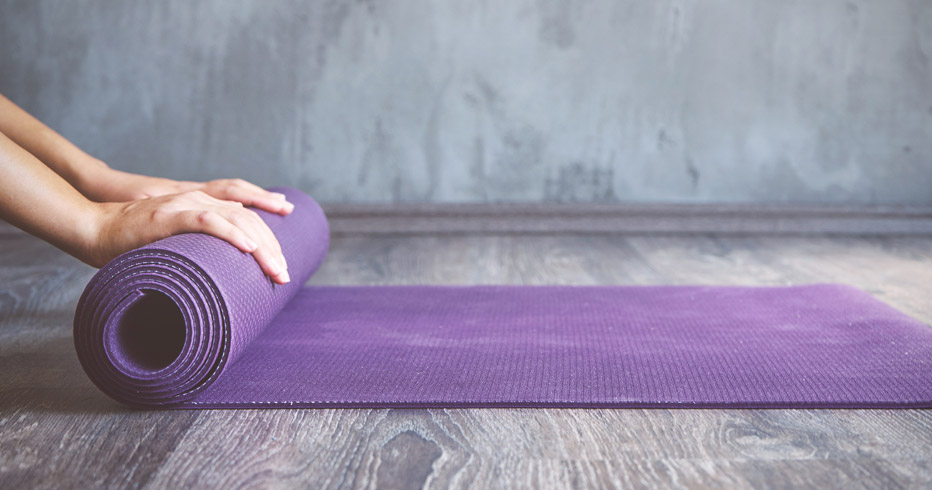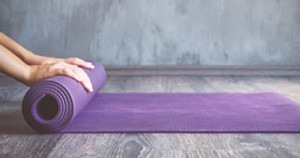The Ergonomics of: Yoga
Posted by Tyler Reinhardt on Apr 12th 2017

Everyone who’s held an office job has heard of ergonomics - the idea that proper positioning and maintaining your comfort as you work will minimize injuries and health issues associated with long hours of doing repetitive tasks. Usually you hear about it in an office setting, but what about outside of your 9-5? There are lots of ways to hurt yourself and lots of ways to prevent hurting yourself. That thing you’re doing that feels like you just took an axe to the shoulder? Yeah, don’t do that thing. This logic applies to a lot of common activities that people take part in when they aren’t crunching numbers or taking conference calls. This series will explore ways to avoid injuries related to placing unnecessary strain on yourself, starting with something near and dear to the heart of many an urbanite: Yoga.
Everyone likes to get a little bendy with a group of strangers every now and then, and recently yoga has become a popular way of doing just that. You get a little bit of a work out, stretch out some of your lesser-used muscles, and you get to learn a little bit about your own body and its limits. I’ve been to a few classes myself and have found them all very enjoyable. However, it’s easy to see how one could injure themselves if they aren’t careful. Fortunately, we’ve found a few tips.
Tip number one: Find an instructor who’s actually an instructor
This doesn’t mean seek out someone who climbed every mountain in Tibet while twisting themselves into a pretzel. Most teachers nowadays have to do 200-500 hours of training. You want to find someone who has gone through this training, as it’ll minimize the chance of your teacher giving you a bad adjustment or pushing you to do something you aren’t ready for. One side note on adjustments: If the idea of another person repositioning you makes you uncomfortable, let your instructor know. They’ll respect your wishes, and if they don’t, they’re probably not the right instructor for you to begin with.
Tip numero dos: Get your head out of the clouds. Manage your expectations No one ever masters anything overnight, and yoga is no exception. You likely won’t be able to do a full headstand or put your feet behind your head after one session. Don’t put that kind of stress on yourself. Just do what you can. If it hurts, don’t do it. Part of yoga is figuring out what works for your body.
Tip number next: There actually is something wrong with a little competition I saw a girl once do a headstand and go ever so smoothly from that position to some nonsense where her feet went over her head and touched the floor. My own body pretty much just went “nope,” and I sat in some sad interpretation of the pose that came before. It was fine. Nobody cared about my mess of a position, and while she was impressive with her flexibility, it’s not like she won a new car or anything for going above and beyond. Do what works for you. You’re not in a competition. There’s no cash prize at the end. Equally as important as not trying to compete with your classmates is not competing with yourself. Some days you’re going to be more up for it than others. That’s okay. No one expects 100 percent perfection 100 percent of the time. Hurting yourself trying to outdo past you and your classmates isn’t going to get you anywhere that you want to be.
Next Tip: Focus on your alignment. Yoga, like many other art forms, has various practices. Some focus more on certain aspects than others. The best styles for avoiding strain related injuries are those that have some concentration on alignment like Iyengar, Anusara and Viniyoga. If you’ve any experience with ergonomics at all, you know that a lot it has to do with positioning and alignment, like keeping 90 degree angles at your elbows and knees while keeping your shoulders in line with your forearms. Proper alignment keeps you from overexerting to compensate for bad positioning. It goes a long way in helping to avoid straining yourself.
Final Tip: Life happens It doesn’t matter how many precautions you take, sometimes things happen. If you accidentally injure yourself, take the injury seriously and consult with a medical professional. At the very least, don’t return to your practice until you’re all healed up. It’s also best to inform your instructor of any recent injury. If they know there’s an issue beforehand, they’ll know not to push you too much, and they’ll be more cautious when helping you to make adjustments to your poses.
As with all things, a little common sense will go a long way. I cannot stress enough that if it hurts, don’t do it. Your yoga practice is about you, not impressing a room of people who in all likelihood probably aren’t paying that much attention to you in the first place. Hopefully these tips are enough to keep you injury-free during your yoga-ing, but, if ever you need a little help staying injury free in the office, you know Human Solution is there for all of your ergonomic office needs!




